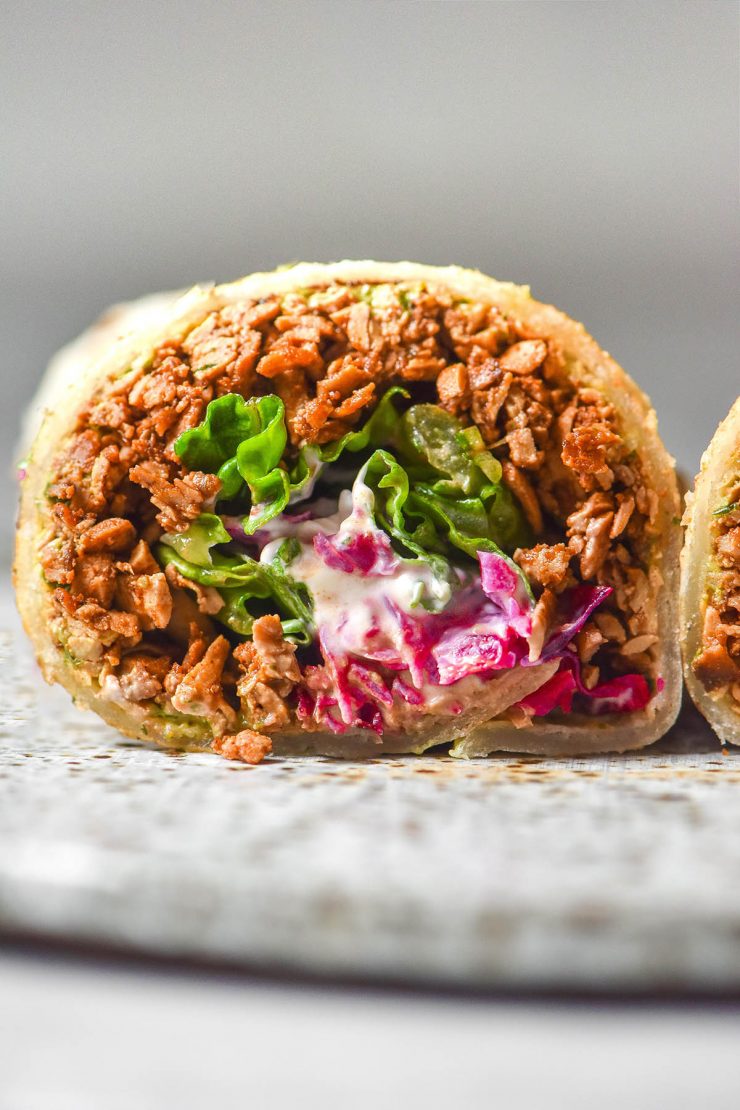
I have a shameful secret to confess: I am a white flour tortilla girl. Sure, corn tortillas are nice, but I simply cannot pass up a good flour tortilla. I know, I know (sorry!). With that in mind, I decided to publish an incredibly easy recipe for these gluten free tortillas without xanthan gum. They’re quick an easy to make and taste exactly like I remember.
Gluten free tortillas without xanthan gum
These gluten free tortillas are egg free, dairy free, xanthan gum free and vegan. They are very customisable and you can experiment with different flour options. They’re also really easy to make grain free (and still nut free!).
The tortillas use a simple mix of white rice flour and tapioca flour. I use these in a lot of my recipes for a few reasons. Firstly, this combination resembles a wheat based product and has a neutral flavour, too. Secondly, these flours are generally easy to find at the shops and inexpensive to purchase.
The tortillas are held together with psyllium husk powder, yoghurt and boiling water (a scald). They’re flavoured with butter, salt and sugar. The butter is a replacement for the more traditional lard and adds flavour and browning. The sugar also helps create those delicious browned spots on the tortilla.
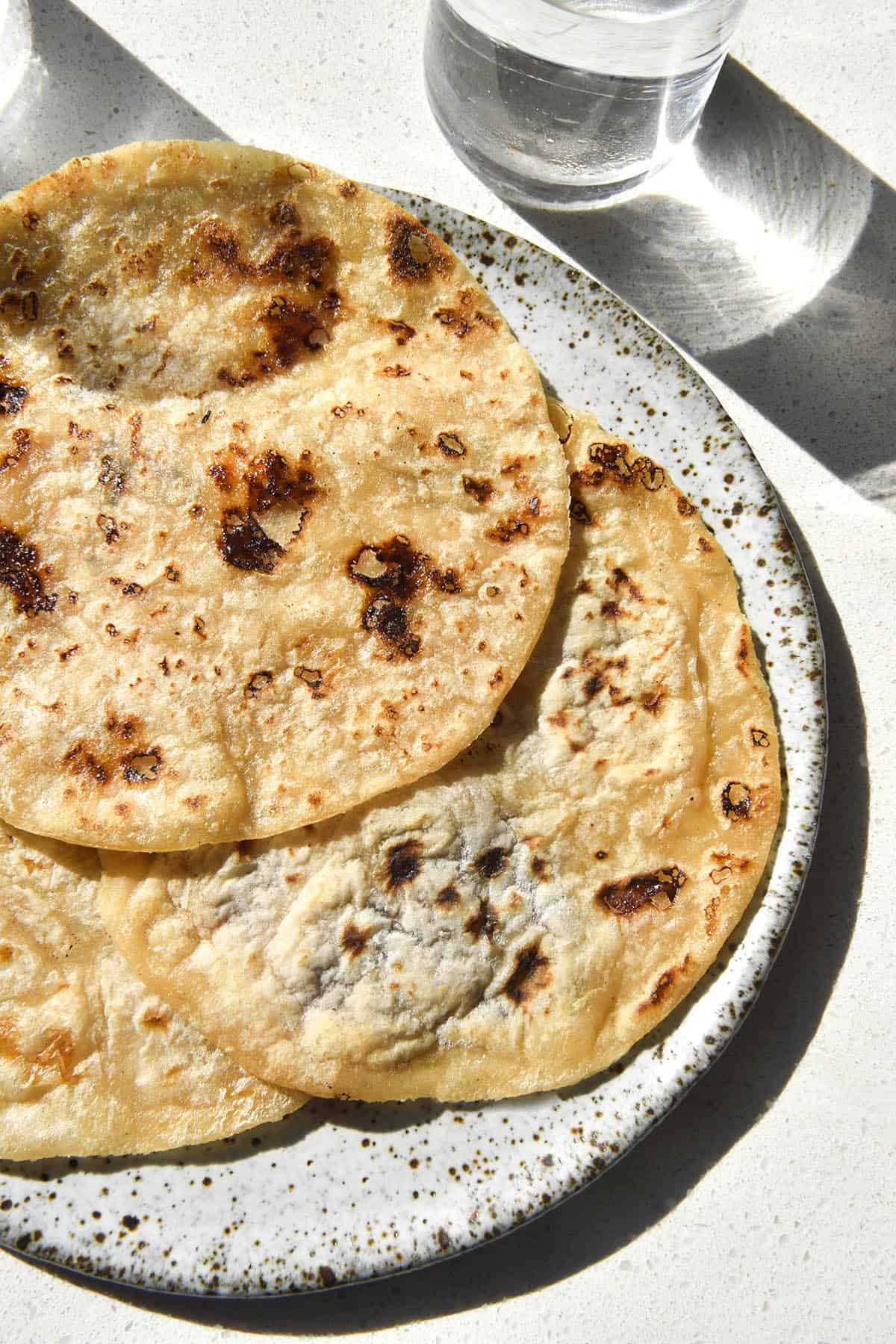
What is a scald?
Scalded flour is flour that has been combined with boiling water. The boiling water gelatinises the starches in the flour, giving it elasticity. These gluten free tortillas are so flexible (even without xanthan gum) courtesy of the scalding process, as well as the psyllium husk and tapioca flour. These processes and ingredients work together to form a perfectly flexible gluten free tortilla.
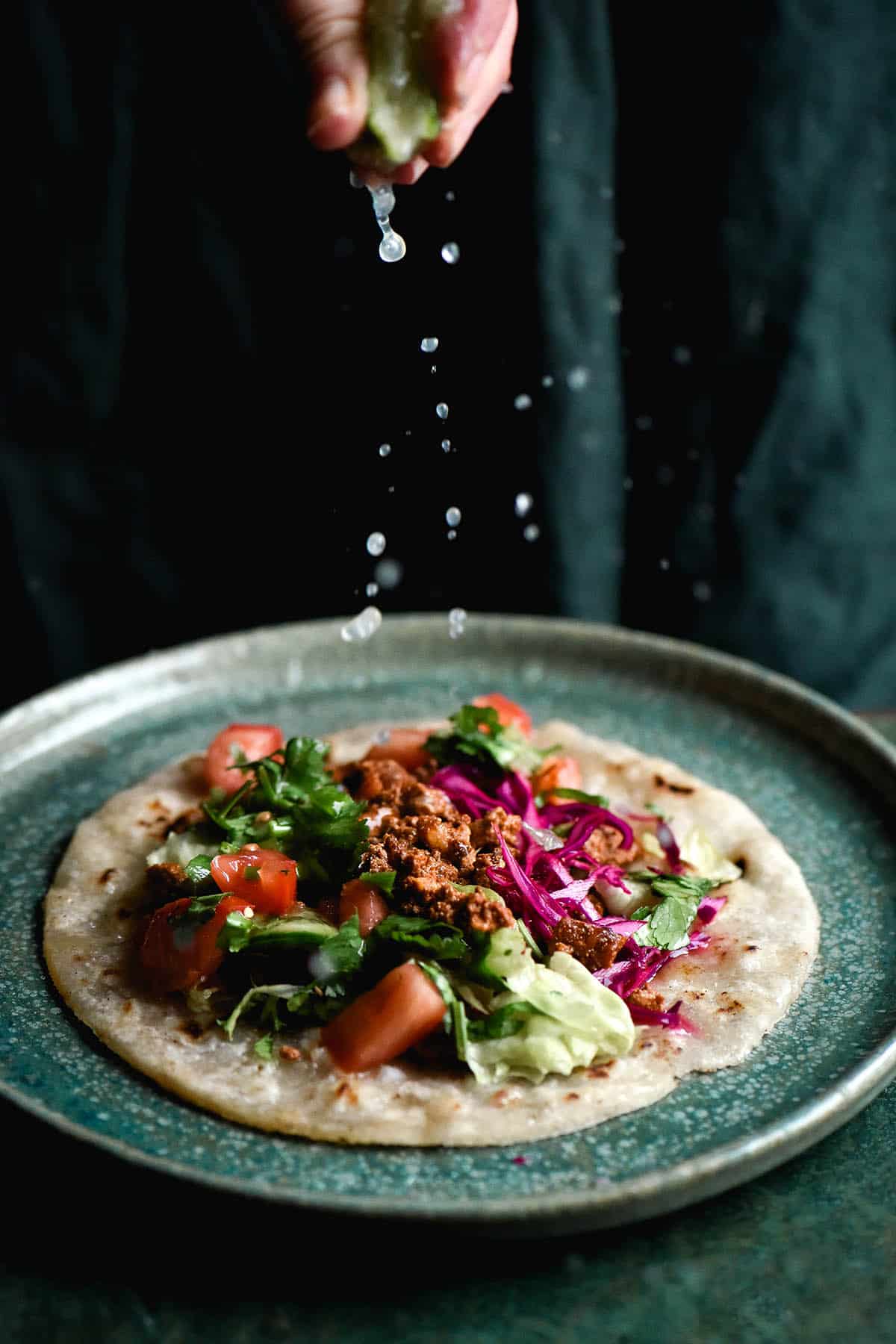
Ingredient notes and substitution options
Again, the tortillas use a simple mix of white rice flour and tapioca flour. I use these in a lot of my recipes for a few reasons. Firstly, this combination resembles a wheat based product and has a neutral flavour, too. Secondly, these flours are generally easy to find at the shops and inexpensive to purchase.
I haven’t experimented with other flours in this recipe specifically. However, I have a number of different options for you. First, you can use my buckwheat wrap recipe. These won’t have that flour tortilla taste as they are 100% buckwheat, but they’re DELICIOUS. There is a quinoa flour version, an oat flour version (which is either gluten free or wheat free) and a teff flour version as well.
Secondly, you can use my grain free tortilla recipe. These use cassava flour for a soft grain and nut free tortilla. They are easily vegan with vegan butter, too.
Finally, feel free to experiment! This should be a fairly simple recipe to play around with, but there are some things to keep in mind as we will discuss below.
Psyllium husk powder that I grind myself is what I use these days. I find store bought psyllium husk powder tends to be too clumpy become grey or purple once cooked, which I don’t like. I buy the whole form and grind it to a powder in my spice grinder. Grinding it yourself doesn’t make you immune from the colour issue, but it does help with clumping.
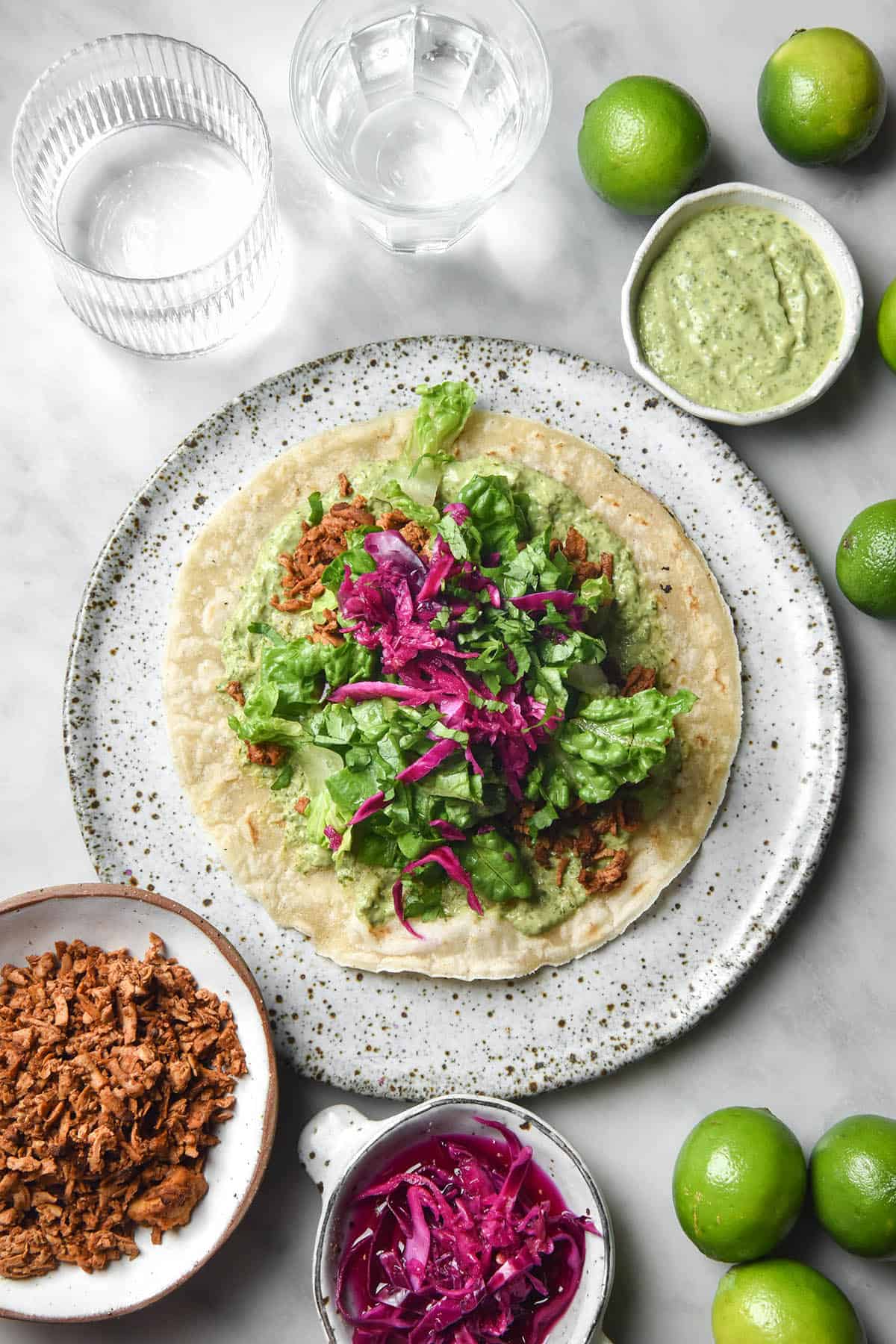
Can I make these gluten free tortillas vegan?
Yes, you can! Simply use plant based alternatives for the butter and yoghurt. Make sure the yoghurt is plain (not flavoured or sweetened) and as neutral in flavour as possible. Keep in mind that in Australia, oats aren’t considered gluten free. If you’re cooking for a coeliac, I recommend using coconut yoghurt instead of any oat based product.
Can I omit the butter and/or yoghurt?
I don’t really recommend this. To pre-empt the question, I tested these gluten free tortillas with oil and no yoghurt, then butter and no yoghurt. I found that they didn’t brown much at all and became crispier than I would have liked. Because they were crispy, they also became quite hard the next day which makes them difficult to wrap food in.
The butter and yoghurt really help keep these tortillas supple and flexible, even in the days after cooking. I highly recommend using them for the most tortilla like result.
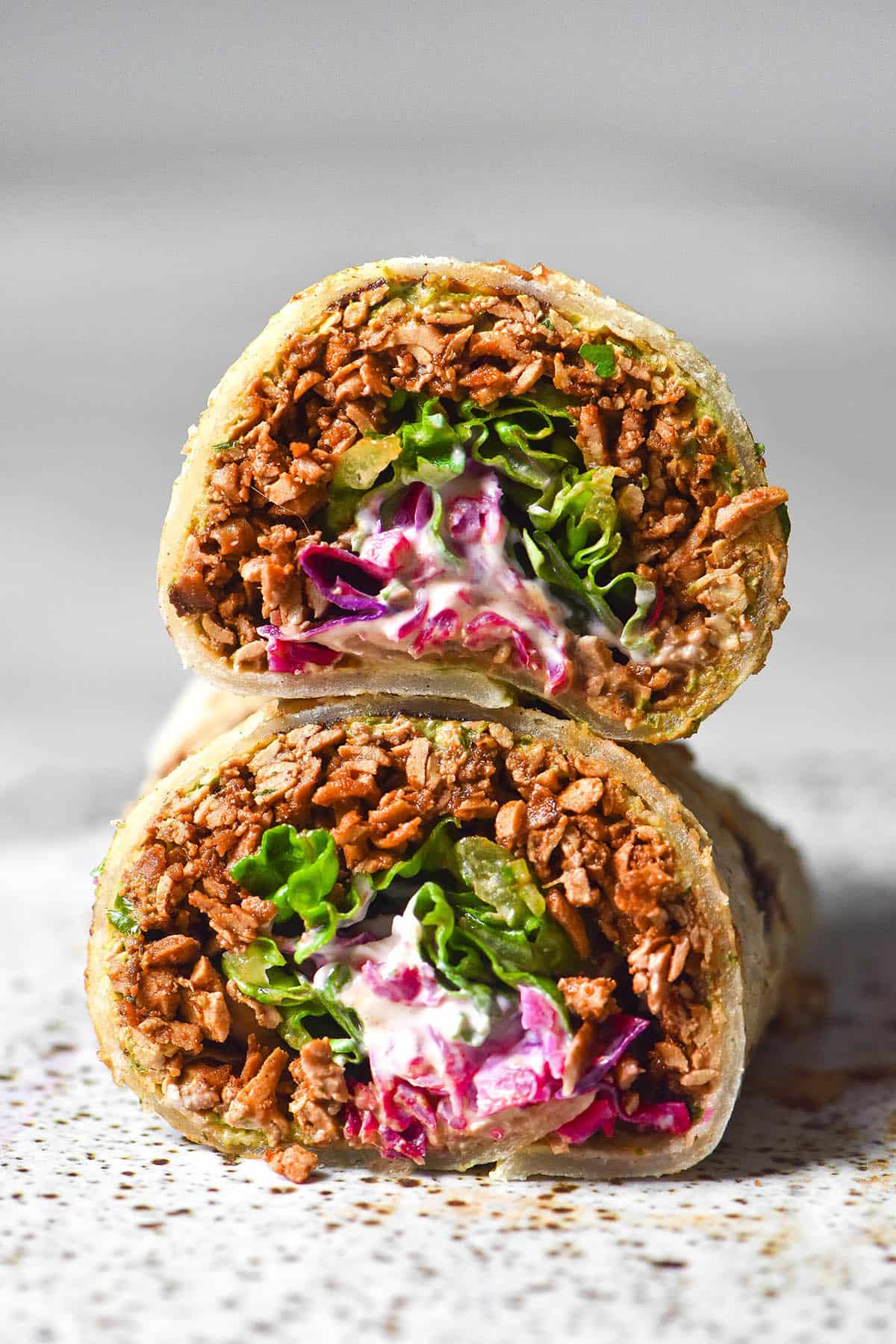
Hydration notes
As always, it’s important to note that the flour I’m using is likely different to yours in absorbency. You might find that the amount of liquid I used is not enough or too much. To make sure you get the perfect tortillas, I recommend adding liquid conservatively to start.
This dough takes a minute or two of kneading before it comes together. Knead it patiently and add the extra liquid as you see fit. The dough should be totally smooth, plump and moist. There should be no dry spots on the bottom of the bowl. At the same time, this is a dough you should easily be able to handle. It should not be a wet batter.
Because I cannot test every bag of flour in the world, you will need to use your intuition when it comes to making these tortillas. Add water to suit how your dough is looking and feeling, rather than just the number in the recipe.

Tips for experimenting with different flours in these gluten free tortillas
I can’t guarantee that variations on this recipe will work as intended. However, here are a few tips to get you started.
Firstly, keep in mind that rice flour is generally the most absorbent gluten free flour. This means that you will potentially need less boiling water if you make a rice flour free version.
Secondly, know that many starches don’t scald that well. They are fine if the flour mix is majority wholegrain, but an all starch dough will become chewy and ball up when scalded. With that in mind, I don’t recommend an all starch version. I have a grain free tortilla recipe if that’s what you need.
With starches in mind, know that these tortillas should also work using all wholegrain flours. This makes them a tiny bit more SIBO friendly. They can be a little thicker and slightly less flexible, but they do work well. You will need to use your intuition and add water to suit.
Thirdly, be aware that some flours are bitter in large quantities. I have found sorghum flour and millet flour to be too bitter to use alone. I’d recommend using them with an even part of another flour.
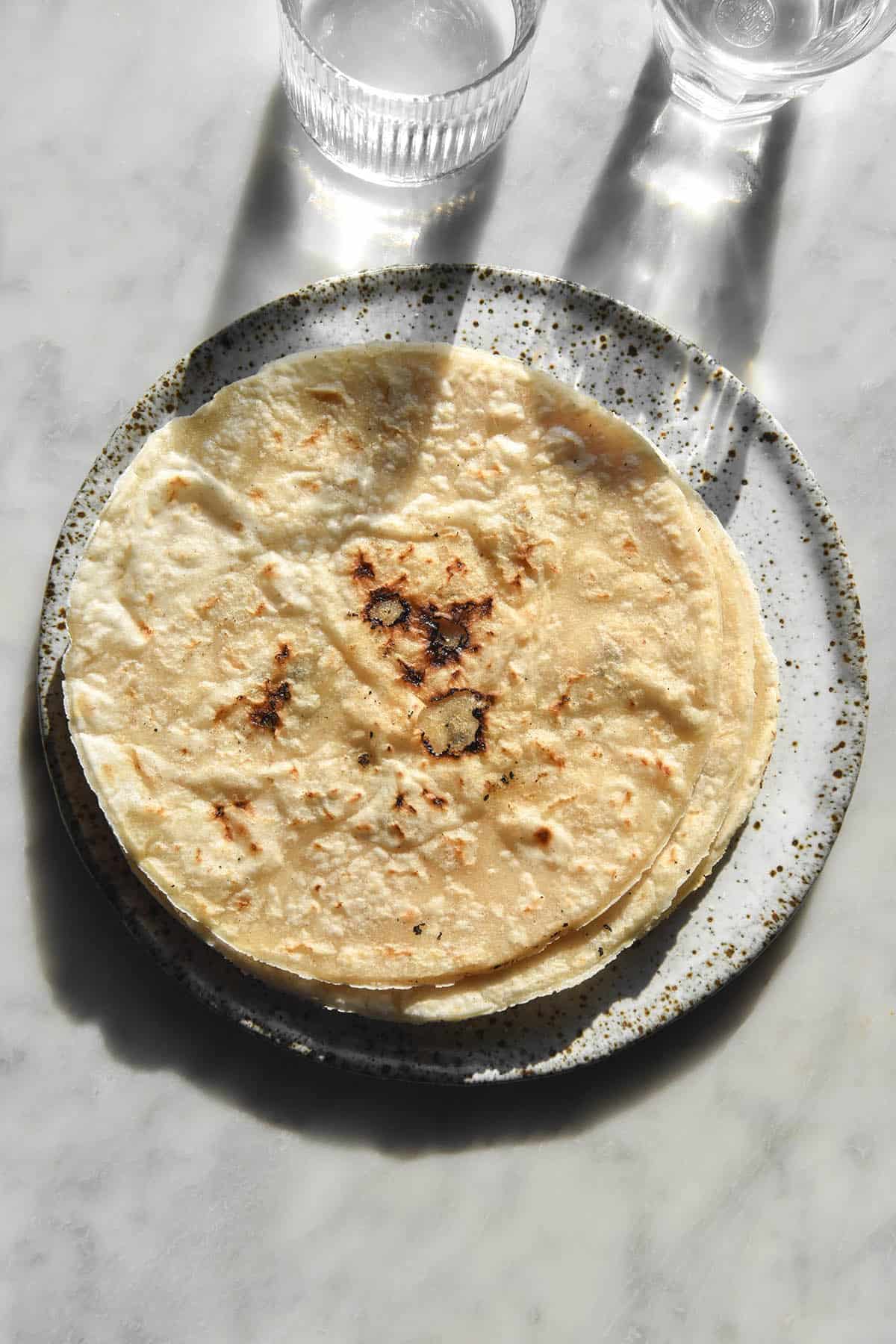
Tips for rolling out and cutting your gluten free tortillas
The most important tip I have is to keep plenty of tapioca flour on hand. This allows you to roll the dough out easily (and inexpensively). It can also course correct a dough that might be a bit too wet.
The second tip, once you have a well floured surface, is to roll the tortillas thinly. The thickness of a regular tortilla or a corn tortilla is what we’re going for here. The dough is easy to roll thinly and tastes much more pleasant when it’s not too thick. Take the time to roll it out thinly and you will be rewarded.
In terms of cutting your tortillas, you have options. Technically speaking, you can cut them to be as large as you’d like. However, because we’re pan frying them, they need to fit into your largest pan (I use my Staub skillet).
I cut 25cm tortillas using a widened (clasp undone) spring form cake tin. 25cm tortillas are what I’d consider to be medium size. I daresay you could go up to 30cm or even larger, but you’d likely need to double the recipe.
Personally, I think cutting the tortillas into circles is important for aesthetics but also taste. Larger, clumpy bits of dough are not fun to eat, and a cut out tortilla generally has uniform width and edges.
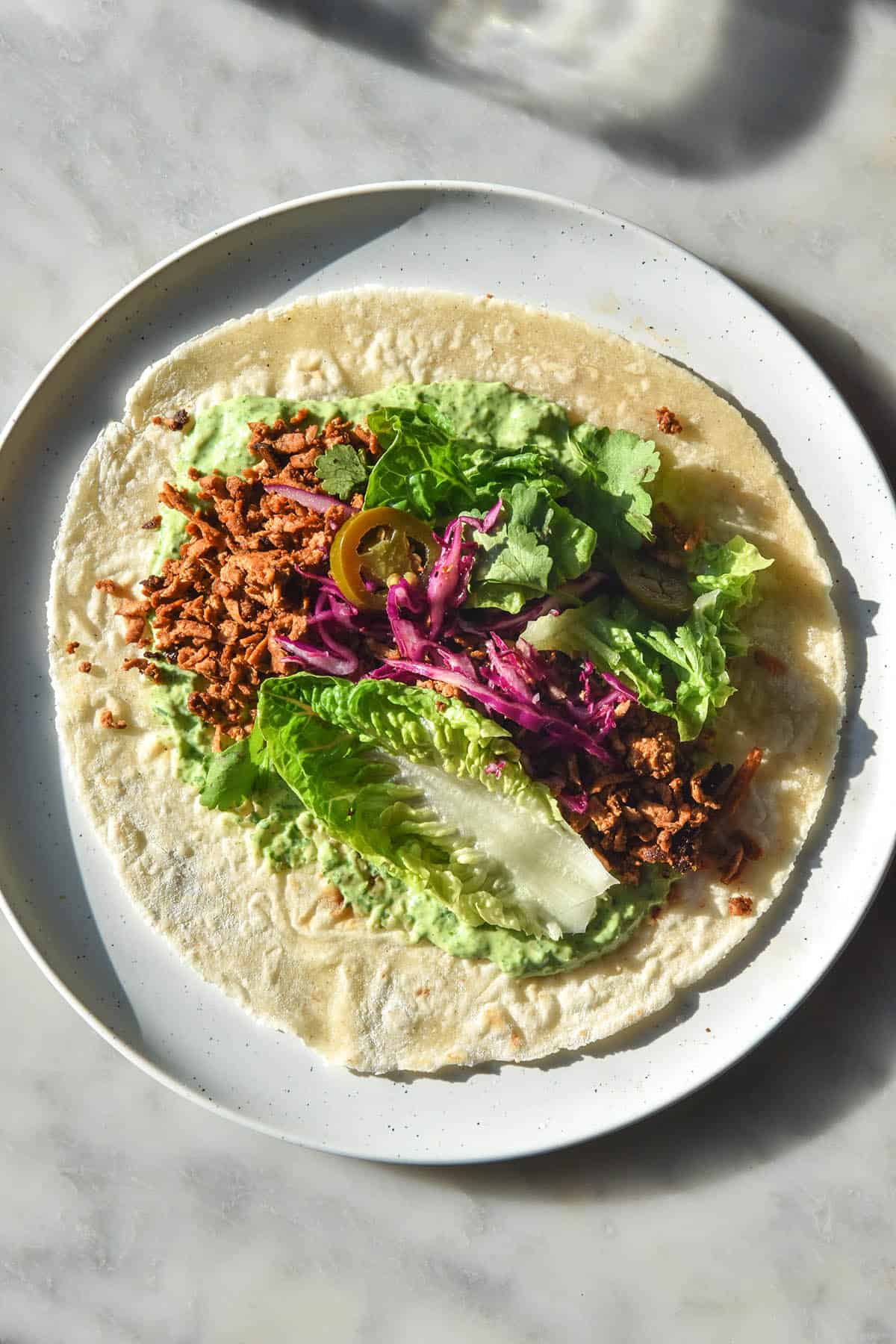
More gluten free wrap and bread recipes
- Gluten free vegan bread recipes
- Gluten free buckwheat bread
- 100% buckwheat wraps
- Over 100 recipes (aka the entire book) in Intolerance Friendly Kitchen
- Grain free white bread without xanthan gum
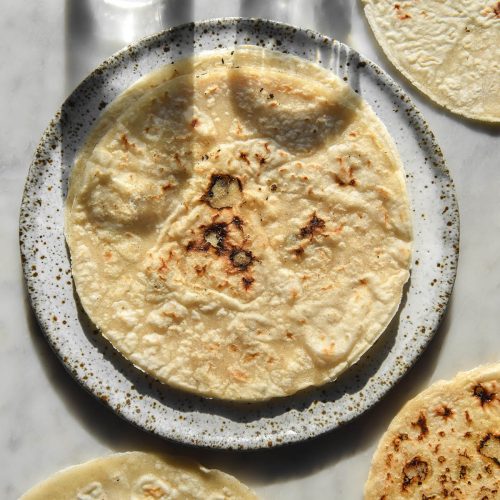
Gluten free tortillas without xanthan gum
Equipment
- 25-30cm cake tin or bowl with a sharp lip, for cutting out the tortillas (10-12 inches)
Ingredients
- 300 g white rice flour
- 150 g tapioca flour
- 15 g psyllium husk powder
- 7.5-10g fine salt
- 20 g white sugar
- 50 g butter, cubed into small cubes (regular or vegan)
- 100 g thick plain yoghurt (I used Greek yoghurt) (regular or vegan)
- 300-350g boiling water (according to your dough)
Instructions
- Whisk together all the dry ingredients in a large bowl.
- Add the butter, yoghurt and boiling water and use a spoon to quickly stir the dough together. Quite quickly, it should become a moist but cohesive dough that you can pick up (be careful though, it will be hot!). Use the boiling water conservatively and add more if needed to form a dough that is moist but not overly sticky or wet. The dough should be moist and feel a little bit elastic. If it doesn't feel elastic at all, add more boiling water a little at a time.
- Allow the dough to sit for a minute or so, then place onto a dry clean bench top. Knead for a minute or just until it forms a smooth, moist ball of dough. Cover with the bowl you mixed it in for 2-3 minutes.
- Flour a bench top with tapioca flour. Divide the dough into 7-8 balls. I find these tortillas are best when made really thin (2-3mm) – they are more flexible and less doughy.
- Take the first piece of dough and roll it out as thin and wide as you can. Use a large mixing bowl with a sharp lid or a spring-form cake tin edge to cut a circular tortilla out of your dough. I aim for 25-30cm large. Make sure the dough is larger than the bowl before you cut. Press down and wriggle gently to ensure a clean cut.
- Gather the scraps back into the dough and repeat with the remaining dough until you have all your tortillas.
- Preheat a large skillet or frypan over a medium heat. Once hot, add a scant amount of ghee or oil if you're using it. Add the first tortilla and cook for 1-2 minutes before flipping to cook on the other side.
- The tortilla should look cooked through and have some lightly browned spots. Repeat with the remaining tortillas, stacking the cooked tortillas on a cooling rack as you work to keep them soft and flexible. If you find them too crunchy after cooking, microwave them to loosen them up.
- Store leftovers in an airtight container in the fridge. To use, simply microwave or heat in a steamy oven to restore their flexibility. See notes for freezing.
Notes
- Read the body of the post for notes on hydration.
- You can experiment with the wholegrain to starch ratio of these tortillas. A larger proportion of wholegrain flour (350g-ish) and a smaller proportion of starch (100g-ish) or even lower. See my buckwheat wrap recipe which uses 100% wholegrain flour (buckwheat).
- Tips for rolling and cutting the dough can all be found in the body of the post.
- These tortillas freeze and defrost brilliantly. My one tip is not to freeze them warm or they risk sticking together. I recommend layering baking paper between each wrap if you want to freeze them in a stack. This way they won’t get stuck together as they freeze and you can defrost one at a time.
- On that note, don’t defrost them in a stack or they might stick together/make the other tortillas soggy.

Hi Georgia, I can’t wait to try these, they look so good! I am also living in Australia, can I ask what brand of white rice flour you use? I struggle with the dough being too wet when I make your recipes.
Hi Francesca! I chop and change a little bit generally either try to use bulk food store (saves the plastic waste) or Lotus brand if I’m in a pinch.
If you’re consistently struggling with them being too wet, I’d suggest dropping the liquid back. Particularly if you use the same brand regularly, as you’ll have an idea of how much to drop back by going forward 🙂